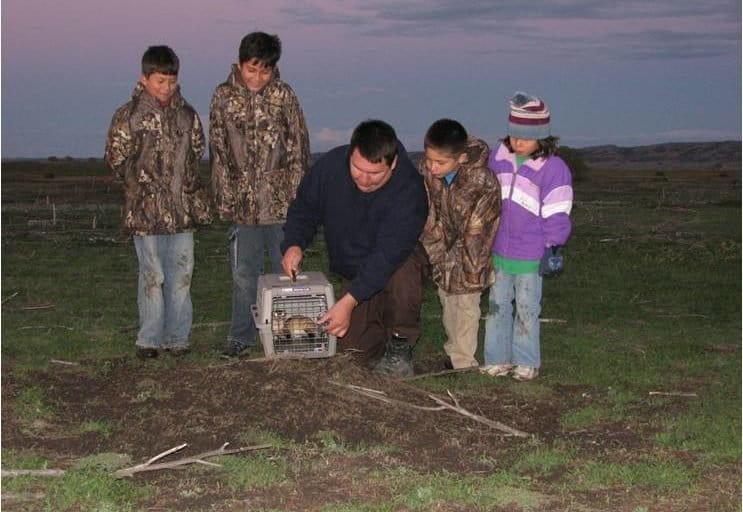- On this Earth Month episode of the Mongabay Newscast, we highlight the growing recognition of the role Indigenous peoples play as the world’s top conservationists.
- We speak with author Michelle Nijhuis, whose latest book, Beloved Beasts: Fighting for Life in an Age of Extinction, is a history of the modern conservation movement. She tells us about the book and what it has to say about how Indigenous communities and their traditional ecological knowledge have finally come to be acknowledged as vital to the cause of conservation.
- We also speak with Dr. Julie Thorstenson, a member of the Cheyenne River Sioux Tribe and the director of the Native American Fish and Wildlife Society. She tells us that the 574 tribes in the United States manage more than 140 million acres of land, and that many of them are working to conserve and reintroduce endangered or declining wildlife, from bison and condors to salmon and ferrets.
Today’s installment of the Mongabay Newscast is a special Earth Month episode in which we highlight the growing recognition of the role Indigenous peoples play as the world’s top conservationists.
Listen here:
Scientists, governments, the UN and the World Bank all agree on the outsize importance of indigenous-led conservation. In fact, a study by the World Bank showed that, though Indigenous people’s traditional lands account for less than 22% of the world’s land area, they protect 80% of the world’s biodiversity. And this protection is not passive: Indigenous-led projects are a vital part of the conservation movement across the world. We discuss today several Indigenous-led conservation projects here in the United States.
In recognition of how vital Indigenous-led conservation practices are to protecting our planet, there’s a growing global movement to secure Indigenous land rights. But the conservation establishment hasn’t always prioritized the rights of indigenous peoples or even recognized their contributions to preserving nature. We speak today with author Michelle Nijhuis, whose latest book, Beloved Beasts: Fighting for Life in an Age of Extinction, is a history of the modern conservation movement. She tells us about the book and what it has to say about how Indigenous communities and their traditional ecological knowledge
We also speak with Dr. Julie Thorstenson, a member of the Cheyenne River Sioux Tribe and the director of the Native American Fish and Wildlife Society. She tells us that the 574 tribes in the United States manage more than 140 million acres of land, and that many have fish and wildlife management programs working to conserve and reintroduce endangered or declining wildlife, from bison and condors to salmon and ferrets. Yet these programs receive no annual funding from the US federal government, though legislation currently before Congress might be about to change that:
Follow the Mongabay Newscast via Apple Podcasts or wherever you get your podcasts. You can also listen to all episodes here on the Mongabay website or download our app for Apple and Android devices to gain fingertip access to new shows and all our previous episodes.

Banner image: Xiomara Cabraca, an Indigenous Bribri woman checks the ripeness of cocoa pods in her biodiversity-positive agroforestry system in Talamanca, Costa Rica. Agroforestry is an ancient Indigenous agricultural method which provides homes to bugs, bats, birds, and more and covers a global land area the size of Canada: a new-to-science (and probably endangered) bat species was even found recently living in a coffee agroforestry plot in Mozambique. Image by Monica Pelliccia for Mongabay.
Follow Mike Gaworecki on Twitter: @mikeg2001.

See related coverage here at Mongabay:
Underfunded but passionate, Native American conservationists call for more support
FEEDBACK: Use this form to send a message to the author of this post. If you want to post a public comment, you can do that at the bottom of the page.
